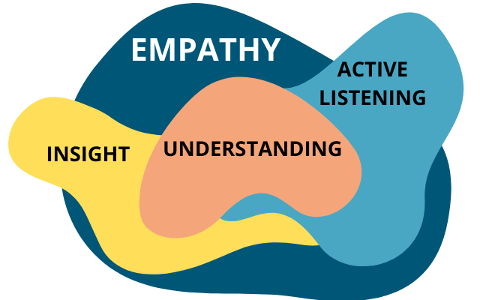Moments That Matter, Part 2 – Skinny Data, Deeper Insights

In Part 1 of this blog series, we introduced the Rule of 5—a statistical principle that shows how just a handful of data points can often give you a reliable sense of the whole picture. This may seem contradictory to the prevailing mindset of the AI era, but the Rule of 5 is a helpful reminder that we don’t always need vast oceans of information to make smart decisions. In Part 2 of this series, let’s build on that idea by exploring the power of skinny data—and the role it can play in data analytics.
What is Skinny Data?
Skinny data refers to small, targeted, and purposefully chosen datasets that are highly relevant to a specific context or decision. Unlike big data, which aims to collect and analyze every available piece of information, skinny data focuses on moments that matter—those key signals that reveal what a person is feeling, what they need, or what they are trying to accomplish.
Think of it like this: instead of trying to listen to every word of every call, read every chat, or categorize every email, skinny data means listening to the right words at the right moments— the high-signal interactions that tell you what you need to know.

The Hidden Cost of Big Data
One of its superpowers is that AI is incredibly good at finding patterns in big data. When you’re training a model to recognize fraud, recommend products, or transcribe voice, feeding it large, diverse datasets helps improve accuracy. But in many real-world applications, especially where time, budget, and security guidelines are involved, collecting and analyzing huge datasets can be more of a barrier than a benefit, and here’s why:
- Data is siloed. Emails live in one system, calls in another, CRM notes in yet another. Bringing them all together requires deep integrations, custom development, and security reviews.
- It’s resource-heavy. Processing big data consumes compute power, storage, and time.
- Privacy risks grow. The more you collect, the more you’re responsible for protecting—and the more intrusive it can feel to the people you’re analyzing.
In contrast, skinny data avoids this bloat. It’s faster to deploy, easier to manage, and more aligned with responsible AI principles.
Why Skinny Data Makes Implementation Feasible
One of the strongest arguments for skinny data is practicality. Most companies don’t have the resources or infrastructure to build a fully centralized, omniscient data lake. Even if they did, doing so often runs into long timelines, complex legal reviews, and cultural resistance.
Skinny data makes empathetic analytics feasible to start small and iterate. It allows teams to build minimum viable analytics with real value—without needing a 12-month data unification project first.
Because skinny data is less invasive and easier to explain, it’s easier to get buy-in from employees, IT, and legal stakeholders.
There’s no question that AI thrives on data. But smarter AI doesn’t always need more data—it needs the right data. By focusing on purposeful, context-rich, human-centered data, we help AI do its job better while remembering that it’s here to serve the people in your center.
In the world of workforce analytics, that means not necessarily trying to analyze every scrap of data, but instead zeroing in on the key patterns that actually reflect how someone is feeling and why they feel that way.

Empathetic Behavioral Analytics: A Use Case for Skinny Data
Empathetic behavioral analytics is all about understanding people—especially employees and customers—through the lens of intent, motivation, and emotion. It’s not about creepy surveillance– it’s about support. To be effective and ethical, it should rely on focused, minimal data that protects privacy while still delivering meaningful insights.
That’s where skinny data really shines.
Let’s say you’re a contact center leader who wants to understand when agents are reaching moments of frustration or burnout. You could theoretically pull every email, analyze every call, and extract sentiment from every CRM interaction across the entire organization. But that’s not only invasive—it’s logistically overwhelming and likely to raise privacy concerns among employees.
Instead, you can define a few “moments that matter”—like the sentiment score of an unusually long call, the results of a one-on-one performance review, or an unusually short interaction after a series of long ones. These micro-signals, captured in small datasets, can be powerful indicators of stress, fatigue, or disengagement. They’re less about volume and more about context.

Micro data points are powerful not because they appear frequently, but because of the context in which they arise. An unusually short call from an otherwise chatty agent, a subtle shift in sentiment during a key conversation, or a repeated delay in task completion—these aren’t massive trends on their own, but they can signal deeper emotional or cognitive states.
Unlike big data, which relies on patterns across volume, micro-signals shine when interpreted within their situational frame. The real value comes from understanding why something deviates, not just that it does—making context the key to meaningful, actionable insights.
From Big Brother to Big Empathy
Skinny data isn’t just about technical efficiency—it’s about respect and relevance. It’s about choosing to focus on people and their experiences, not just their digital exhaust. And when we design systems that prioritize the moments that matter, we create not only better outcomes, but more trust, more engagement, and ultimately—more humanity in the enterprise.
We’ll be digging farther into Empathetic Behavioral Analytics in the next chapter of our blog series on Moments that Matter. Follow us on social media to find out more about the use of Behavioral Analytics to see how it can drive real business outcomes. Or contact us and let’s talk about how cutting-edge Empathetic Analytics can help your organization!